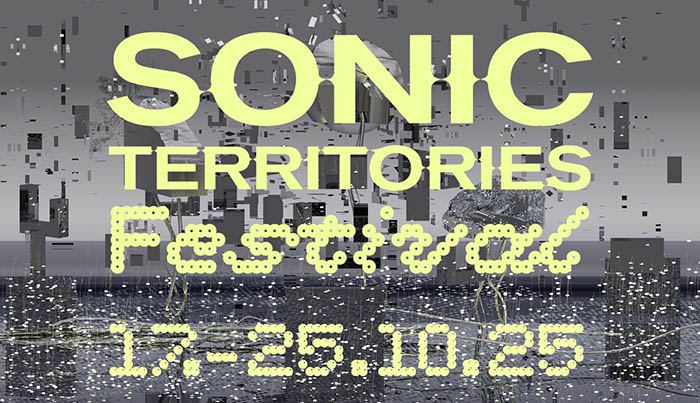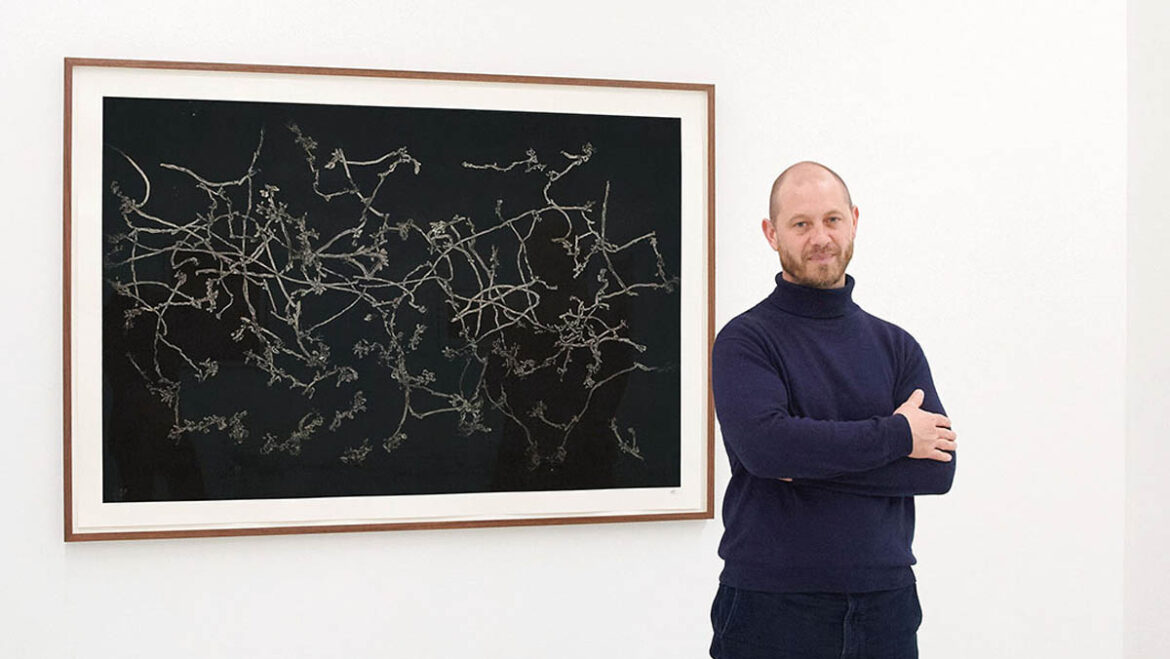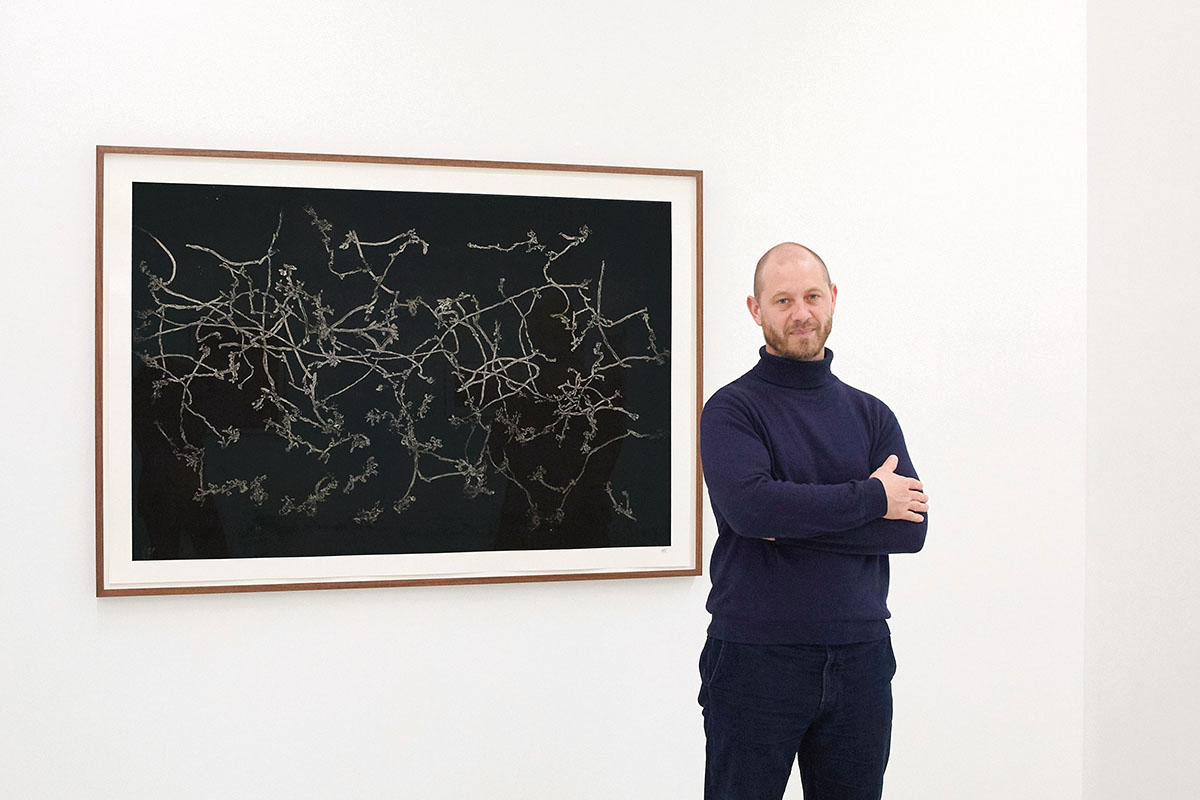
„NEBENLINIEN- 15 Jahre Naturantypie“ is almost a „retrospective“ of your work in the last fifteen years. Even if you are very young, you began making art at a very early age. The exhibition already opens at the gallery desk in the front with your very early work. Tell us more about this work.
I made the work “Acrylbild (Kunstakademie Trier)” back in 2000, when I was fourteen years old. I was at the European Art Academy in Trier (West Germany) back then. Already then, I began creating these abstract, graphic works. I tried to make this very deep black effect using deep blue and black. I was using metal sheets to mask off areas of the paper. I had rolled it up because it was on cardboard; I needed to do it to get it transported home by train.
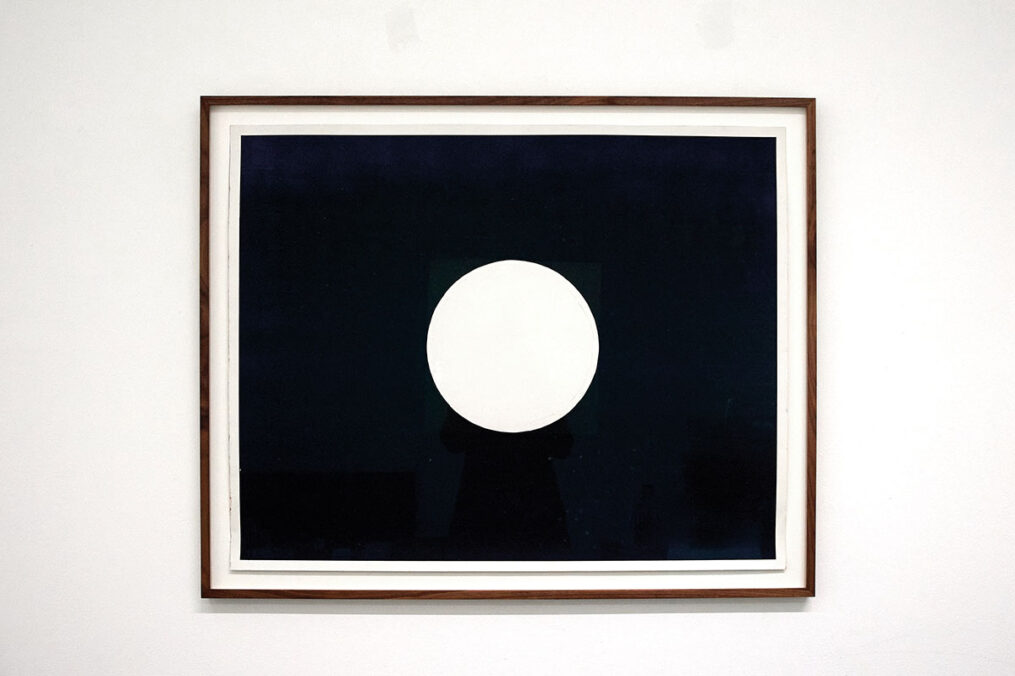
How would you describe Naturantypie and how you came to this term?
I met a linguist on the train and asked him what this actually was. And he said he would call it Naturantypie — from naturata and naturans, meaning “coming forth from itself,” and -typie, from printing and drawing, since it’s the same root. Because you can’t really categorize it, is it an imprint, because something leaves its trace? Or is it a wiping gesture, or more like drawing? It exists in this in-between world. I was incredibly grateful for this input.
What was your first attempt at something that could go in the direction of the Naturantypie technique that you are using today?
„The world through… pigeon eyes.“ It has an incredibly sentimental title, but it was actually meant as a pun—because of „Taub“ [which means both “deaf” and “pigeon” in German]. That work I did in 2009 was when I was in Bologna, where I spent a semester at the European Art Academy. We were working with etching, and I had prepared a plate using vernis mou (a soft-ground etching) while sketching pigeons outside and making nature studies.
At some point, I placed the plate between my legs, at my feet, and fed the pigeons directly on it, just as I had been doing while drawing them. And then I realized—on one side, I had my own nature studies of the pigeons, but the pigeons themselves were also drawing with their feet, with their claws. And that duality—the essence of both—one being a human perspective, and the other, through their movement, a form of drawing of its own. Not long after that, maybe about half a year later, I started with my first experiments exploring what I now call Naturantypie.
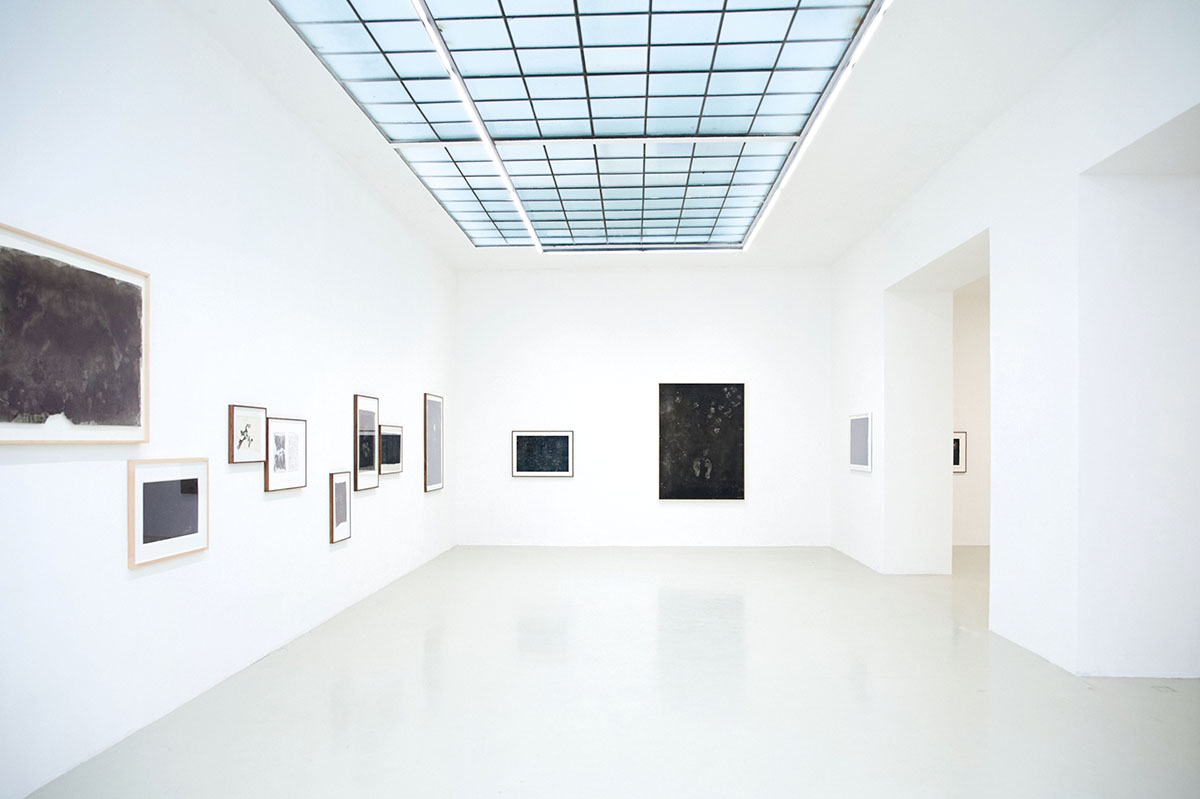
Did everything work out immediately? Were you satisfied with the work at that point? How did you make the works fixed and preserved till today?
I experimented a lot, and I was letting things just happen. I did attempts where snow fell from a branch, or I let water flow over the surface and then freeze, just to see what would happen in that process.
And from water, I slowly moved on to rain. On view in the exhibition are also the first rain Naturantypie works, which are pretty great because you can see how the effect of rain growth has changed over the years. I found technical ways to make it look very detailed in the last year.
Back then, I didn’t really have any proper way to fix the surface; I poured all kinds of things over it, simply because I didn’t have the right materials.
You were working outdoors the whole time?
Yes, always. Out in the open, in all kinds of places, partly because I had no money and also no studio. So I worked outside.
In terms of location, how often did you work in other places other than your studio and garden outside?
Not that often. But there is one work in the exhibition where I worked with very limited technical capacities on the beach in Brazil. Usually, I work in the garden, but also in the forest and such places. But I always had a few spots I kept returning to.
And when are you most productive in which period of the year?
Whenever everything starts to move. And in winter, I usually tried to progress technically—to see how I could change the technique.
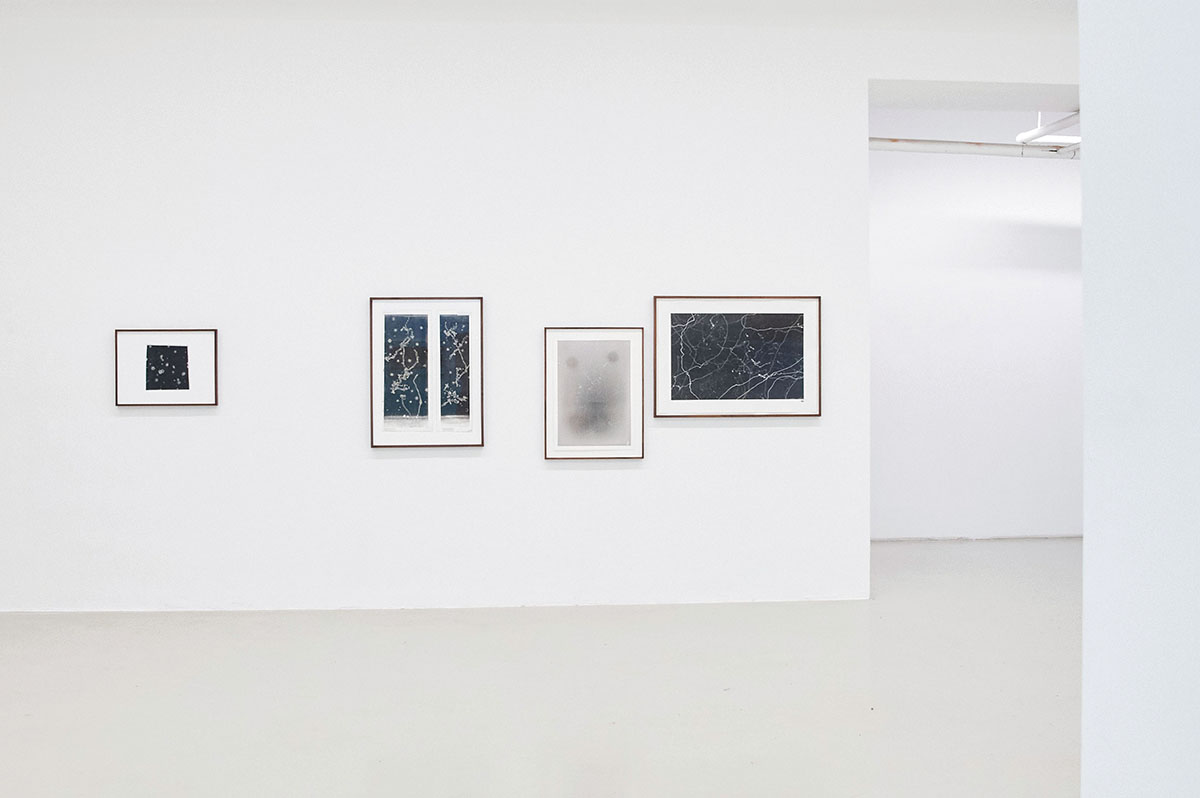
In the earlier works, there are also self-portraiture motives. You mentioned you did draw a lot of nature studies, but are you also interested in human anatomy?
I was also very interested in anatomical drawings. Somehow, anatomy, technique, and nature studies all came together—and on top of that, I was also studying European calligraphy at the time. It became about movement as a way of creating marks and marks as a way of generating narrative or information. Movement as a carrier of information kept coming together more and more in my work.
In the exhibition, some works are still completely static—no movement yet, but very quickly, I started doing my first movement-based experiments, for example, pressing my face into the paper, creating a kind of multidimensional view of something, like a 360-degree perspective. I also placed dead bodies of animals on paper and let them be walked over by animals that are alive. So that was where the first bodily imprints appeared, imprints of movement and also the first animal traces.
How do you decide on compositions in your work?
The composition is always as simple as possible so that the complexity that’s already there can come forward. That’s why I never worked with color.
The best combination to bring out something so delicate is a light line on a dark background, not the other way around. To work in color is also distracting—it always becomes emotional. And the emotionality, or what I associate with it, for me lies in the movement, not in the color.
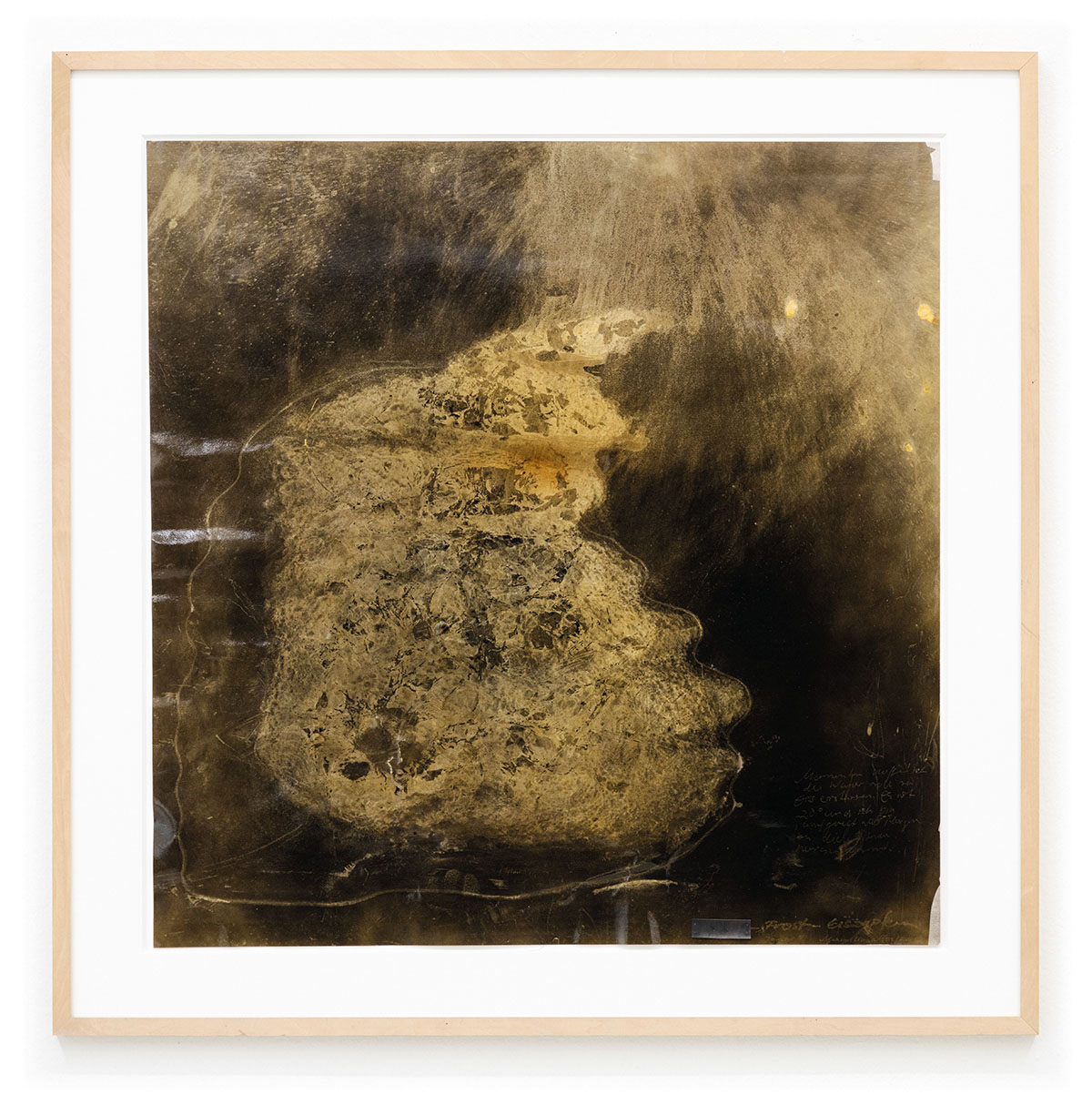
I noticed in one of your earlier works that you had written something on it. It wasn’t printed but handwritten; can you tell me what it is?
I always write notes directly onto the work. In a way, it’s similar to the nature studies. A motif, and then next to it some text. I try to see drawing and language as analytical tools, as ways of understanding how something works. These here were some of the first attempts that actually succeeded, where I managed to fix Naturantypie in a matt coat.
Do you also keep a diary of your processes?
Yes, I do. These days, I often record little video logs on my phone, but those are mostly private. And I still write every morning. And of course, I keep a diary of weather and chemical, and technical conditions for each work. It is good to have an overview; it brings me forward.
At one point, your work started to appear photographic or graphic, not so much traces and more a conscious product, more curated, and intentional. How did it come to the point where the format itself holds a very strict form of a picture?
Maybe around 2013 or 2014. And that’s when I really started to look for a central motif, to ask: there’s this active white border here, how do I activate it?
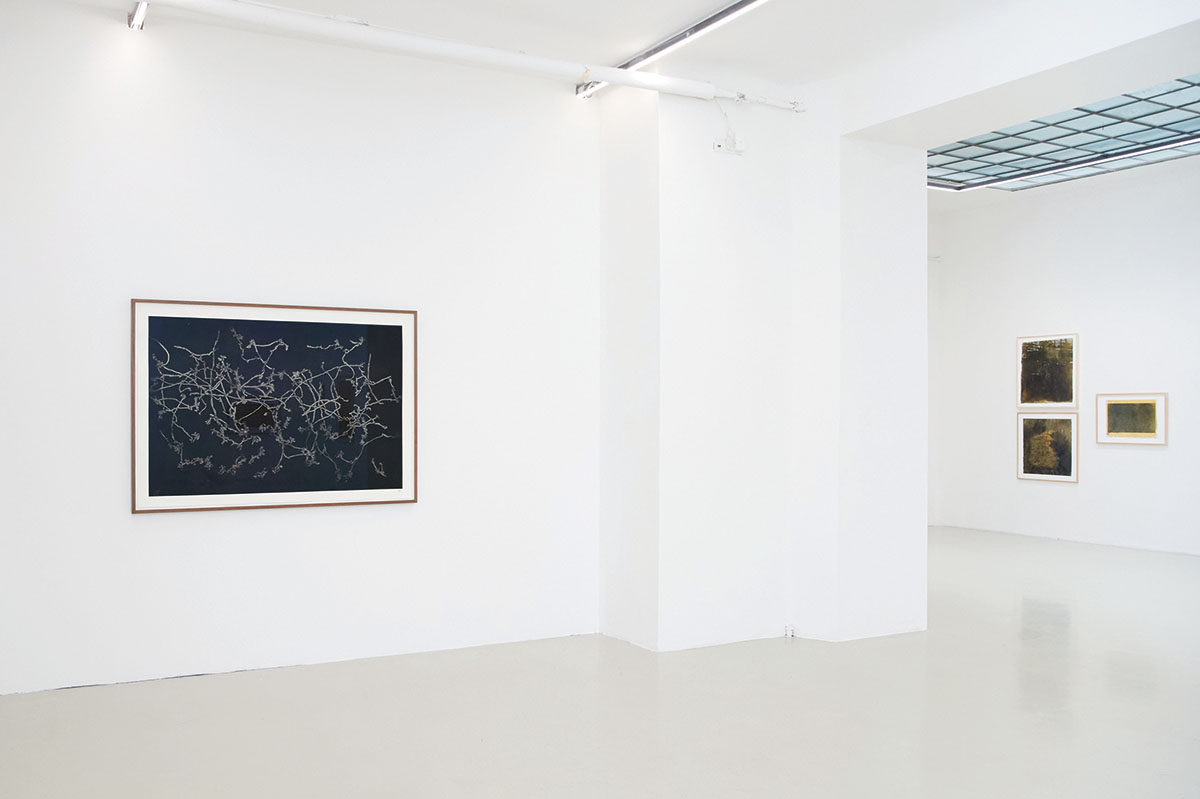
For me, it’s quite sculptural in understanding, thinking beforehand about what the image will be, not faking it later through cropping. With the earlier ones, I could of course crop them, and through that framing, select the image and composition afterward. But here, I wanted to show that the image was determined in advance, that I had already clearly decided what would happen on the surface. And that decision, what becomes the image, feels necessary to me; it gives the work a kind of seriousness.
Traces are the key to your practice? Why are you so fascinated with it?
I actually want all this symbolic emotionality that we connect, for example, with colors to be forgotten. So that people start using their abilities to read traces again. This was absolutely vital in prehistoric times. When they follow an animal for weeks and only ever see it on the horizon, the only way to understand what the animal is is through its tracks.
If I imagine wolves, for example, they can tell from the footprint of a deer which one is sick.
They pick that one out and follow it for weeks. We used to do the same. That means everything that defined us—our entire existence—depended on traces.
But we hardly have any overlap in everyday life anymore, where we use those abilities.
And to forget everything else, to return to that completely original perspective, that’s really where I like to work most. When I really feel it, okay, I forget that it’s an image, and I start reading it.
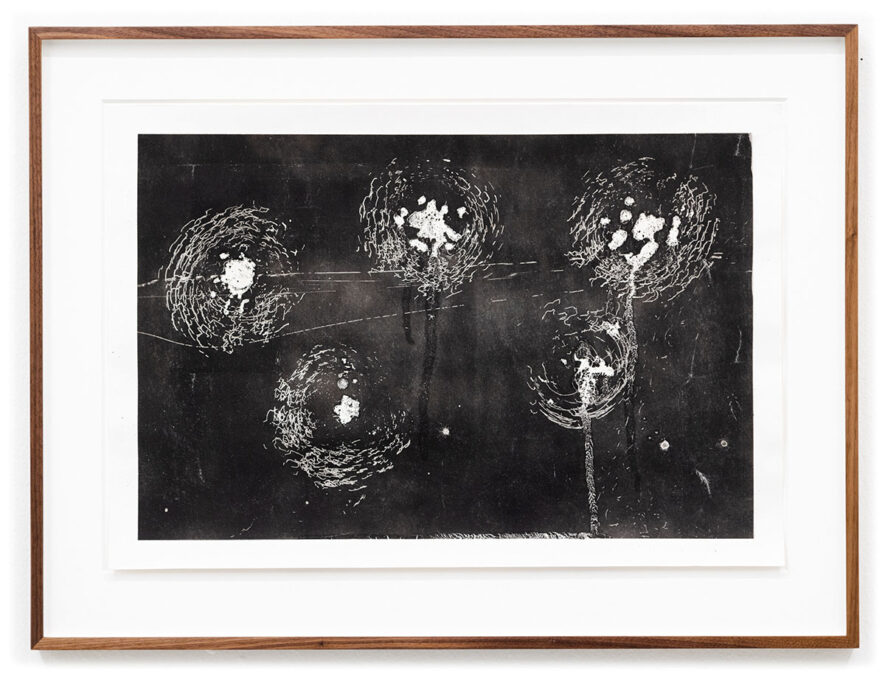
There is also your fingerprint starting to appear in your works at one point. How did you decide to incorporate such a private “touch” into it?
Sometimes I left a fingerprint on the work unconsciously; I always held the sheets somehow, so the fingerprints stayed there. But at some point, it became a kind of principle: I thought I could just use my fingerprint as my signature.
Tell us about the paper and frames you use. What role do they play in the process and “finishing” the work and taking care of its longevity?
I am in countless discussions with restorers. It is a totally controlled process when it comes to the paper or framing. Alongside everything you see here, the paper first appears as material, then the technique.
I think deeply about the conservation aspects. Walnut wood I use in making frames for my works, is incredibly high-quality wood, and it ages the most interestingly. I wanted to make works that age beautifully, to use materials whose aging process is beautiful, so that in a hundred years you can look at it and see it’s a hundred years old, but it still has a completely universal aesthetic.
What I’m showing is basically universal vitality. That’s the essence of life—it’s just movement, and every living being functions completely independently.
The passepartouts of your works are very special; I noticed those shapes that precisely follow the edges of the paper. How do you make them? Do you collaborate with someone who cuts them for you?
I photographed each piece to scale, with reference marks, then digitized them, traced the paths, and sent those paths to a CNC passepartout cutter.
In the end, it’s also part of my practice; it’s about accepting the form that’s there, accepting the mistake, and taking it as seriously as possible. Like a folded sheet of paper—I could have just cropped the damaged part, or ironed it flat again, or cut off the tear. But that’s not my way.
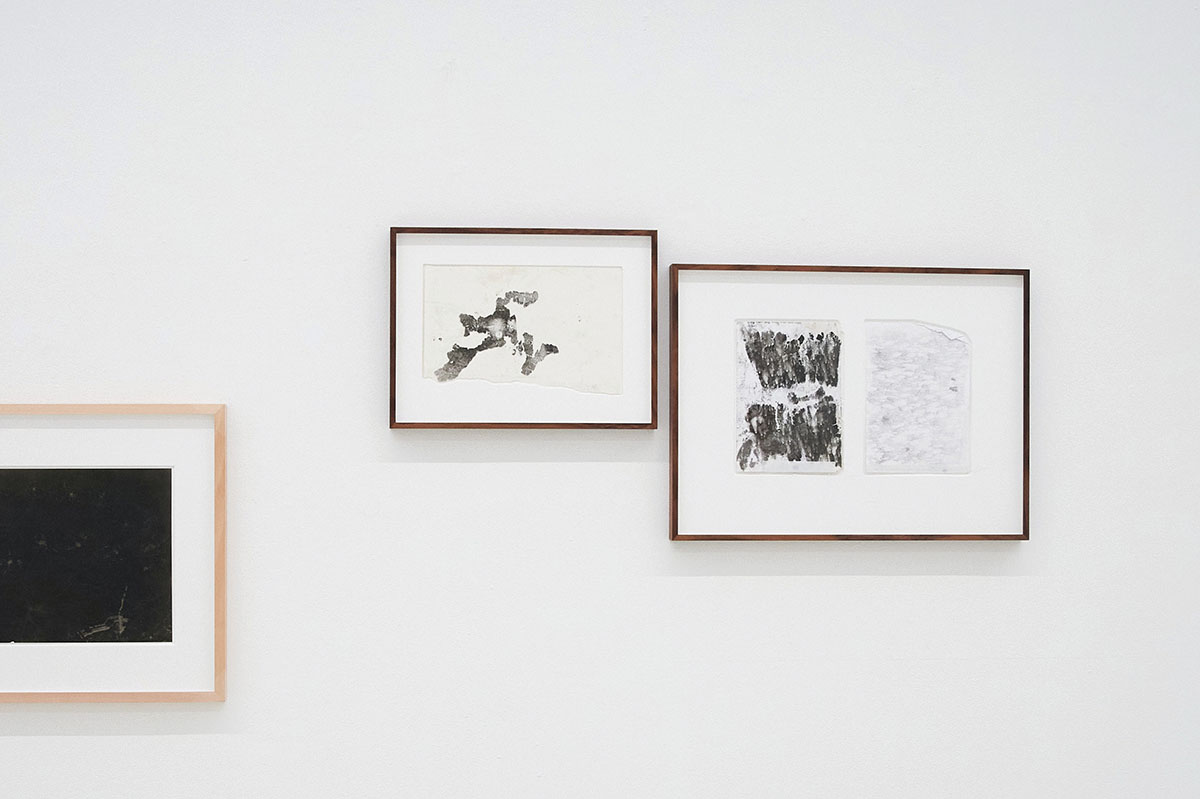
When was the point at which you introduced a machine to your process?
I developed a machine that produces the coating for me. It allowed me to control this ultra-precise coating even more accurately. More and more precise each time. And that’s also when I started working directly with my assistant. Meaning, I was able to produce many more studies. Like, twenty times as many. And that’s when all the technical innovation processes really started taking off. And of course, the amount of work just kept increasing.
How many factors are there to make the work what it is in the end? How does scale influence your work?
It’s insane how many factors you have to consider here. It’s brutal. Just being able to even get to the point where you can reproduce this—that’s very complicated. There are years of development in between works you see in the exhibition.
Sometimes you can really see fine tiny dots in the work. The animals (ants) are the same ones I was working with before, but due to a technical advancement, the print is more detailed. And now, at the point where I stand today, I sometimes have to make a difficult decision: do I continue to push the machine forward? Now I have so many possibilities—to consider how I orient myself, what I actually want to show: the essence of the animal, and so on. I work with feeding sources, and they moved toward them—forming these newly painted structures.
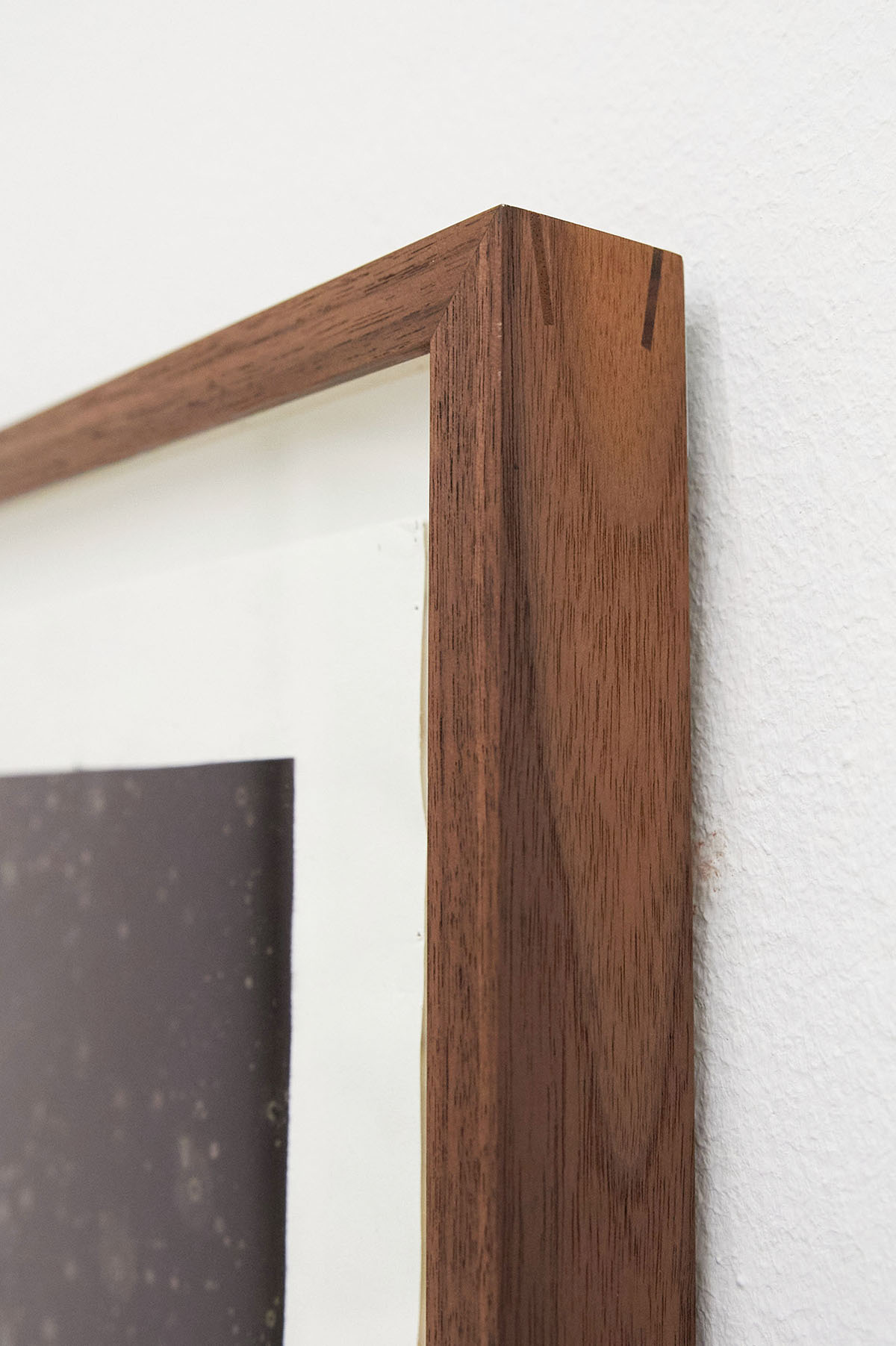
You also work with animals that can able to be seen with the microscope, such as mites. Is there a way to control them, or how do you work with them?
Yes, working with them, we’ve reached something special, because these are all living creatures that you can only really grasp through a microscope. You have no direct access to their real world. You don’t know how many are crawling around. You don’t know what they’re actually doing. You can only look at one thing at a time. But here, you can enlarge it to two meters, and then you see hundreds of living beings interacting, doing things together. It’s truly a gateway into a completely different world. And that fascinated me—because at the beginning in the studio, we were thinking, “Where do mites go now?” So we just placed it on the floor, and the next day, they were there. And they’re literally everywhere. It’s like there are thousands of these creatures, and we have no idea about them.
Can you tell us more about the newest works we see in the show? The work that looks almost like a cherry tree might be my favorite.
The effect of the “tree” comes from the snail trails. There were forty filthy snails on the paper, making the image we see now. Normally, I control them, but here I just tried to “paint” with them—placing them in positions and leaving them to make the trace. You can see the trails here fading out, darker at the edges.
I don’t just randomly compress things, throw some insects on them, and call them cool—it’s about taking it as seriously as a painter with a brush.
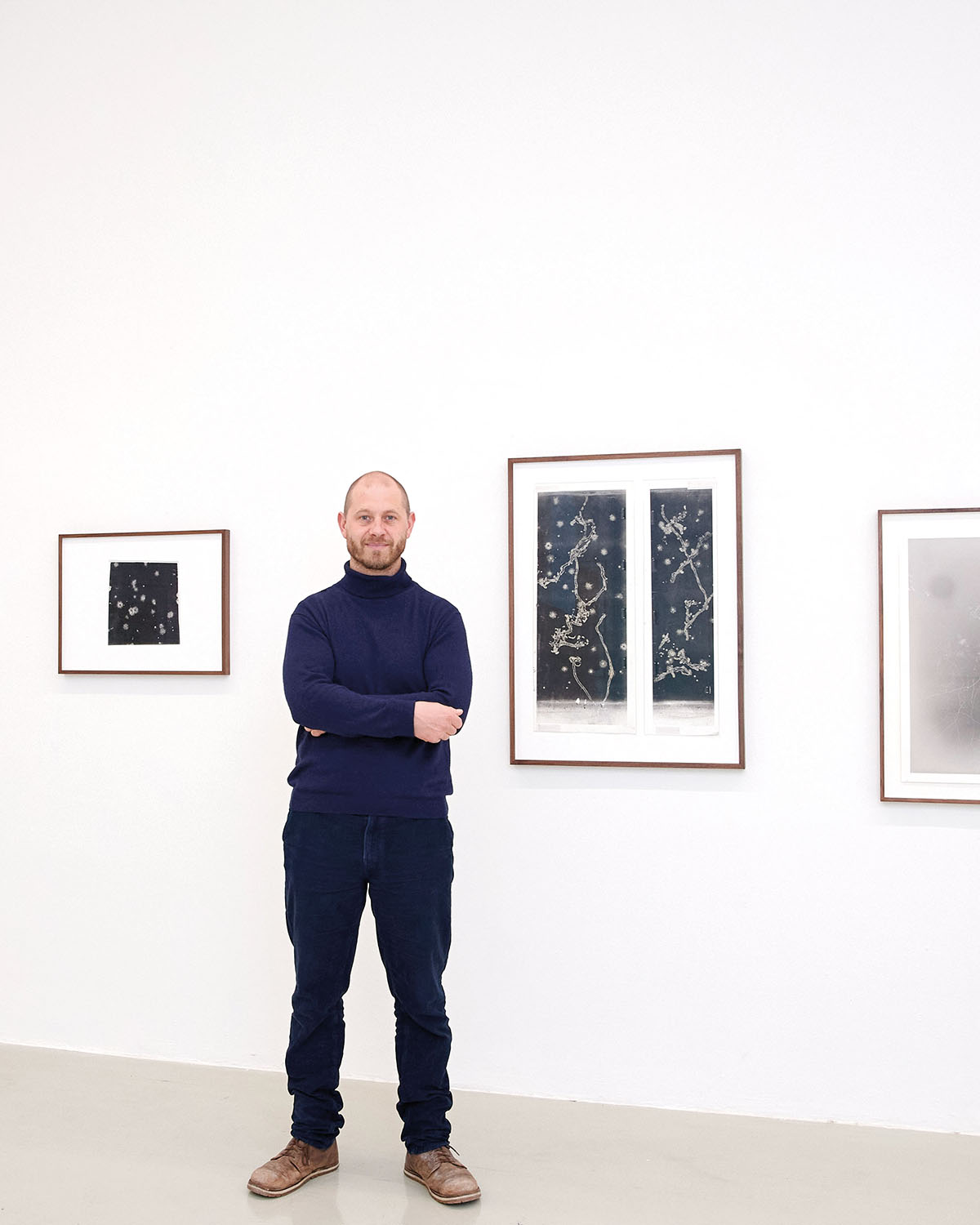
“Regen Leinwand, 2025” is the work that you worked on for the first time on canvas instead of paper.
There was the leap to see if the whole thing could work on canvas—and that’s what I’m currently working on developing. Canvas is such a raw material. Getting a smooth surface so that it works like it does on paper is also very difficult. But now we’ve figured out a really good technical thing—how to make a canvas completely smooth.
And now I’m kind of back to just looking at things, because technically, I went so far. I am exactly where I imagined myself to be.
How do you feel about the „imperfections“ of the works?
Well, it’s really interesting—in the exhibition here, when we make a round through the fifteen years of evolution in my practice, we end up with a piece that’s technically completely perfect. But I still don’t find it satisfying, because now it’s too perfect again.
It’s really always a kind of balancing, striving toward something that you can never actually reach. But that’s completely fine with me, because that’s exactly what defines it for me. I don’t need to arrive. What has always interested me is how you can work something out as clearly as possible. How can you dive as deeply as possible into that world—and still keep that tension, that feeling of joy, when something works out again?
Solo Exhibition: Maximilian Prüfer: NEBENLINIEN- 15 Jahre Naturantypie
Exhibition duration: 11.10.2025 – 21.11.2025
Opening hours: Tuesday-Friday: 11 AM – 6 PM | Saturday: 11 AM – 4 PM
Address and contact:
Galerie Kandlhofer
Brucknerstrasse 4, 1040 Vienna
www.kandlhofer.com
www.instagram.com/galerie.kandlhofer
More about the exhibition: www.kandlhofer.com/exhibitions/
Maximilian Prüfer (b. 1986, Germany) explores the interactions between natural processes and human culture, addressing existential, philosophical, and political themes such as evolution, ecosystem manipulation, and interdependence. Using his Naturantypie technique, he records the movements of insects on paper, expanding the concept of drawing beyond traditional tools while simultaneously manipulating these instinctive processes. In projects like A Gift From Him, he investigates the impact of environmental destruction on pollination, documenting cultural adaptations and technological interventions that reveal the complex and ambivalent relationship between humans and nature. www.maximilian-pruefer.com, www.instagram.com/maximilianpruefer/



